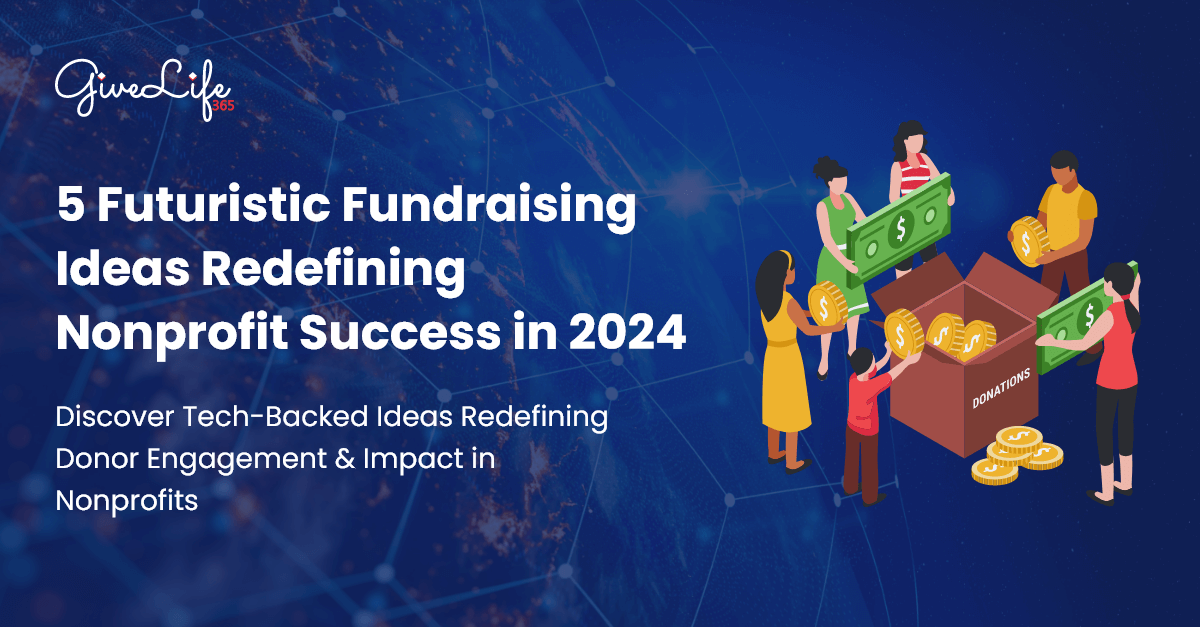

Innovation is what drives the progress of fundraising in the nonprofit industry. As technology advances, nonprofits need to adjust and embrace futuristic concepts to improve donor involvement and secure essential contributions. This article delves into five progressive fundraising ideas that are backed by technological trends and are reshaping the nonprofit sector's success.
Embracing Blockchain for Transparent Transactions
Key Benefits: Transparency, Security, Trust
Blockchain technology has emerged as a game-changer in the nonprofit sector, transforming transparency in transactions. By leveraging blockchain, nonprofits can provide a transparent ledger of donations, ensuring that every contribution is traceable and permanent. Based on recent studies, there is a higher likelihood for 55% of donors to contribute if they have visibility into the impact of their donations. Incorporating blockchain not only builds trust but also encourages increased donor engagement due to the transparency and accountability it offers.
Statistics:
- 90% of donors consider transparency and accountability essential for nonprofits.
AI-Powered Personalization for Donor Relationships
Key Benefits: Personalization, Engagement, Retention
Artificial Intelligence (AI) is reshaping donor relationships by enabling nonprofits to personalize interactions at scale. By analyzing donor behavior and preferences, AI algorithms can tailor communication and engagement strategies. Studies reveal that personalized communication can increase donor retention rates by up to 40%. Nonprofits utilizing AI-driven personalization witness higher engagement levels and sustained relationships with donors.
Statistics:
- 73% of donors prefer personalized communication from nonprofits.

Virtual Reality (VR) for Immersive Impact Showcases
Key Benefits: Immersive Experience, Emotional Connection, Donor Engagement
VR technology allows nonprofits to transport donors into the heart of their cause, creating immersive experiences that evoke emotions and drive engagement. Through VR, nonprofits can showcase their projects and impact, fostering a deeper connection between donors and the cause. Research indicates that emotional connections drive up to a 50% increase in donation likelihood. By leveraging VR, nonprofits can create impactful storytelling experiences that resonate with donors, driving contributions.
Statistics:
- 48% of donors feel more engaged after experiencing a cause through VR. (Source: Multisensory Multipliers report)
Crowdfunding 2.0: Utilizing Social Media and Micro-Investments
Key Benefits: Community Building, Accessibility, Scalability
Crowdfunding has progressed from conventional platforms by utilizing social media and micro-investments to drive influential fundraising campaigns. By utilizing platforms that blend social connectivity with fundraising, nonprofits can reach a broader audience and tap into the power of collective giving. Studies show that campaigns incorporating social sharing mechanisms witness a 10x increase in reach compared to traditional fundraising efforts.
Statistics:
- 71% of nonprofits globally find social media to be effective for raising funds online. (Source: Global NGO Technology Report)
IoT-Enabled Fundraising: Smart Devices for Donation Convenience
Key Benefits: Accessibility, Convenience, Real-Time Impact
The Internet of Things (IoT) has opened new methods for effortless and real-time donations through connected devices. Smart donation boxes, wearable tech, and IoT-enabled apps simplify the donation process, making it more accessible and convenient for donors. Nonprofits adopting IoT-enabled fundraising mechanisms witness an increase in spontaneous and recurring contributions due to the ease of donating in real-time.
Statistics:
- Nonprofits adopting IoT solutions witnessed a 200% increase in spontaneous donations. (Source: WhyDonate)
- 63% of donors are more likely to give through convenient donation methods.(The Giving Experience Study)
In conclusion, embracing innovation and utilizing technology to create impactful and engaging experiences for donors is where the future of nonprofit fundraising lies. By adopting these futuristic fundraising concepts supported by technological trends, nonprofits can redefine success, leading to greater donor engagement and increased contributions to advance their essential missions. Innovation is not just a trending word; it is the motivation behind transformative change in the nonprofit industry.
It is important to remember that while these ideas may appear innovative, they can only be implemented with careful strategic planning, a knowledge of your donor base, and by aligning innovation with the mission and values of your nonprofit organization.
